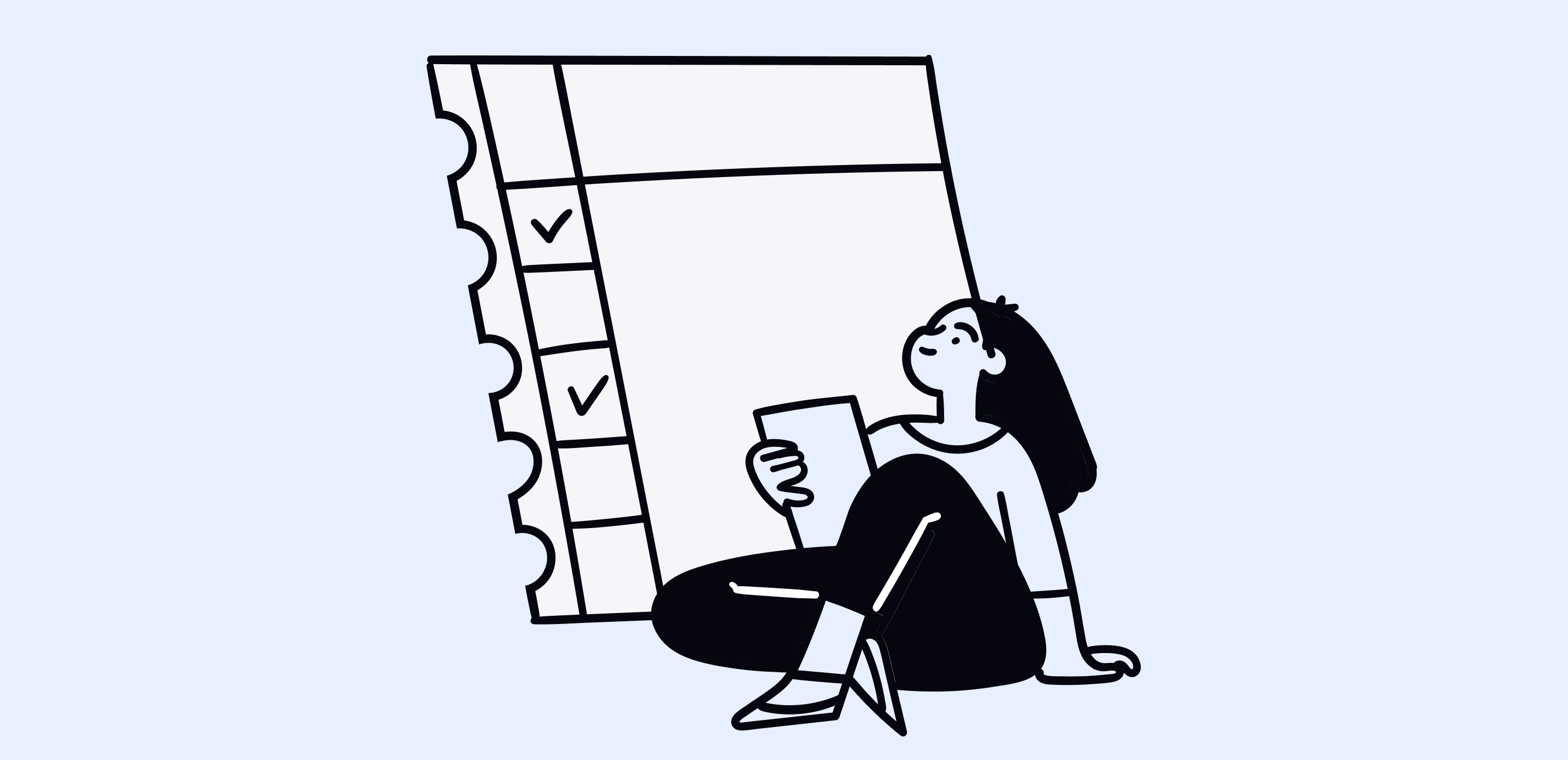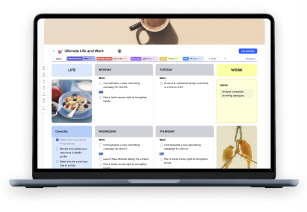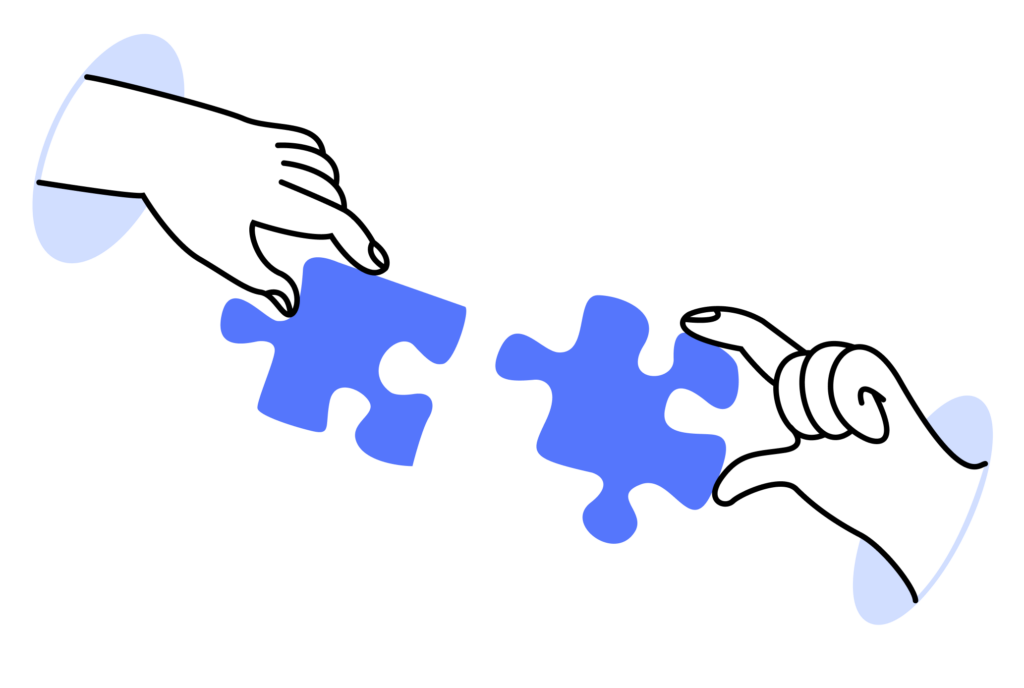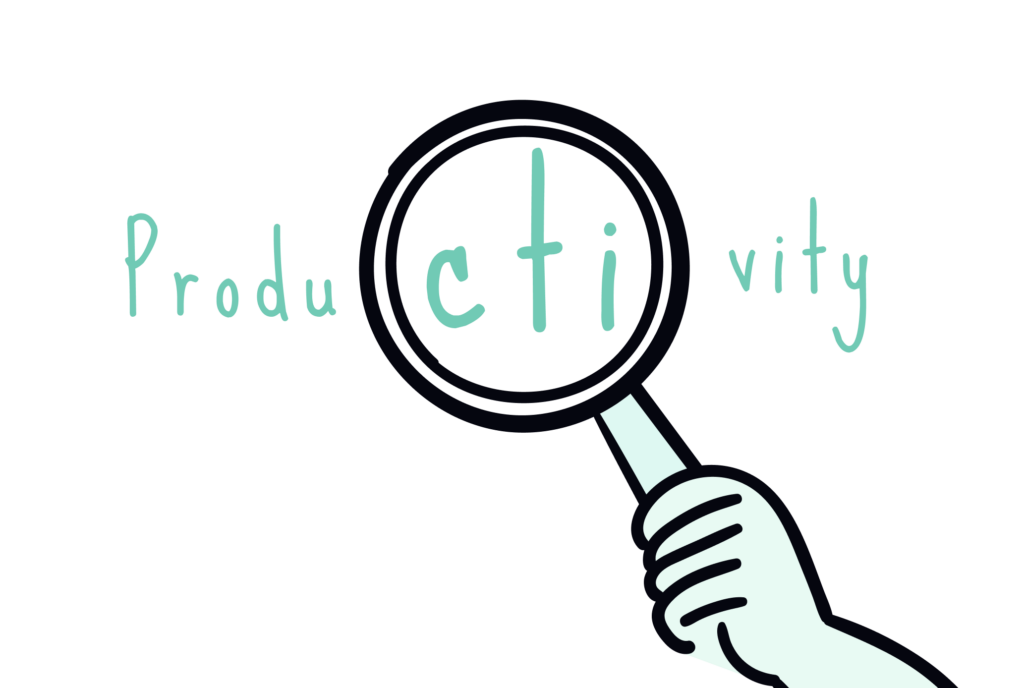The capacity for planning and preparation plays a pivotal role in securing success across both professional and personal spheres. Central to this process is the unassuming to-do list, an uncomplicated yet potent mechanism for task organization and productivity enhancement. We at xTiles have learned long ago that underestimating the power of to-do lists is a strategy that deprives you of a valuable productivity tool.
Instituting a daily planning ritual empowers you to adopt a serene and concentrated methodology for addressing your duties, thereby laying a foundation for enduring achievement.
The primary aim of this article is to underscore the immense value of a basic to-do list and to guide you in crafting one that aligns with your specific needs and lifestyle, ensuring it serves as an effective tool in your quest for success.
Exploring Different Types of To-Do Lists
Before diving into the art of crafting an effective to-do list, it’s essential to recognize that not all lists are created equal. Different formats serve various purposes, each with its own advantages and disadvantages.
Traditional paper lists, digital task managers, kanban boards, and bullet journals are just a few examples of the diverse options available. They are great for everyday use if they match your requirements and style of life.
Devoted users will promote their favorite planning tools. Apple users will tell you that there’s no better to-do list app than Apple Notes, traditionalists will tell you that there’s no alternative to paper planners, and so on. So, it’s important to take a look at all of them to find the one for managing tasks effectively.
1. Traditional Paper Lists
The classic pen-and-paper approach to task management is simple and straightforward. Advantages include tangibility, portability, and the satisfaction of physically checking off completed tasks. However, paper lists can be easily misplaced, and updating or reorganizing them can be cumbersome.
Freedom combined with limitations are two key features of paper planners. In other words, you’re free to arrange your to-do lists the way you like, but you’re limited by the capabilities of paper and pen. There is no collaboration functionality, no automation, no recurring task settings, no due date reminders, etc.
2. Digital To-Do List Apps
These task management apps facilitate your to-do’s organization across all your devices, seamlessly integrating with calendars, emails, and other productivity tools to synchronize your personal and professional tasks.
A to-do list app optimizes your schedule management on the move, offering accessibility across multiple devices. This ensures continuity in task tracking, even in scenarios where a device is compromised. Features such as reminders, widgets, calendar views, and collaborative project management enhance daily task handling.
Moreover, some apps allow users to create custom filters, streamlining the task search process. Collaboration features minimize internal communication overhead by directly assigning tasks to team members, who are then promptly notified.
Nonetheless, considering the long-term perspective, investing in a digital solution can be more economical compared to the recurring costs of paper planners. Plus, you have the flexibility to work with the basic features before deciding on a premium upgrade for more sophisticated planning needs.
3. Kanban Boards
Popularized by the Agile methodology, Kanban boards visually represent tasks moving through different stages, such as “To Do,” “In Progress,” and “Done,” making it easier to prioritize tasks and collaborate with teams. It’s also possible to set due dates for better time management. This way you see all the upcoming tasks and multiple projects you’re currently working on and can build your schedule around relevant for the moment activities. Some apps offer many convenient features like recurring tasks, smart lists, sub-tasks, etc.
However, Kanban boards may feel overwhelming for personal use. They are great for coordinating team tasks and help to easily track their overall progress.
Kanban boards help to stay focused on what you’re doing at the moment because to see other tasks you have to open them to get the details. The general picture gives you enough data to find the task you need, without overwhelming you with others’ tasks.
4. Bullet Journals
A hybrid approach that combines the flexibility of a notebook with the structure of a planner, bullet journals allow for customization and creativity. They can accommodate tasks, notes, and even sketches or doodles. While bullet journals offer a unique and personalized experience, they may require more time and effort to maintain.
Bullet journals are also available online. For example, your simple notes on your smartphone default note apps would be a bullet list. If you use Apple devices, you can benefit from utilizing their Apple notes, if you are satisfied with the basic features the app offers and don’t seek more features. If you use Windows, you can benefit from Outlook tasks or Google Tasks, etc.
They are perfect for everyday tasks and personal use like grocery lists, house chores, appointments, etc. However, they may lack functionality for more complicated and multi-level planning, like yearly goals, bucket list, etc., so you may need to migrate to other apps over time.
5. Calendars
Another widely adopted method is utilizing calendar apps like Google Calendar or the native calendar on your device. This, however, should not douse your initiative to keep a personal to-do list. Many people, in fact, find combining the two – a calendar for scheduling events and appointments and a to-do list for tasks and action items – really ends up boosting their time management and productivity.
Most of the modern to-do list applications integrate seamlessly with popular calendar services like Google Calendar, with the synchronization of tasks on one tool and events on another. Your planning and task management are so well interlinked that there is no need to switch back and forth between your planning, to-dos, and all kinds of different apps.
These five are just scratching the surface of the task management world. Once you get there, you may find that you want to discover new to-do list apps because you need to manage larger projects, paid plans may seem quite tempting, or, on the contrary, you may want to automate everything with ready-to-use templates.
7 Tips to Make an Effective To-Do List
Experimenting with different formats can help you find the perfect fit for your unique needs and work style. However, let’s also increase your chances of building a to-do list that will actually work and help you get through your commitments and errands, even if life keeps throwing new tasks your way.
1. Establish a Daily Planning Habit
Consistency is key when it comes to effective daily planning. By integrating this practice into your existing routines, you can gradually transform it into a habit, making it easier to stay on track.
Let’s imagine a situation where you plan only from time to time. Not all of our tasks can be managed in one day, some of them take more time. This way, your to-do lists turn into something very weird and useless because you have no track of what is already done and what is not.
Planning is a skill, and like every other skill, it needs to be trained regularly. If you have never planned before, don’t worry. The enlightenment will come after some time. However, if you stop planning for a while, be ready that when you decide to start again, it will be much harder than the last time. It might feel like you’re starting everything all over again.
For effective day-to-day planning, identify potential barriers and develop strategies to overcome them, ensuring that this little daily ritual becomes a seamless part of your life. If there’s a block that reappears every day, and you can’t do anything about it, put it into your to-do list.
2. Craft a Purposeful To-Do List
Even though something as simple as a to-do list doesn’t seem to have some grand power; in fact, its whole potential is huge. This is because, due to a to-do list exact in its formulation, daily activities get aligned with the lifelong objectives. The entire idea is to try to have a set of purposes – a to-do list— -uch that every check-off from the items takes you closer to achieving the desired outcomes.
The first step toward doing this would be to clearly define your high-level goals -whether they be applied to your career, your personal development, or really to any other aspect of your life. After having defined the high-level goals, it is necessary that one goes ahead to break them into a set series of goals, then further to another series of smaller tasks, so you can actually have something that you can be doing every day.
For example, if truly what one is aiming at is to write a book, some daily activities that will help him along his way may be things like doing research or even writing drafts for chapters, or generally writing at all. Breaking such a big goal into manageable parts will help you move step by step without feeling the burden of colossal work.
However, listing tasks is not enough, so they should also be well prioritized. First of all, notice the ones most important to your goals or those with extreme deadlines. Tasks of that type are going to be of utmost importance, more so than the others, where deadlines are less pressing.
One of the tools in this methodical approach for better prioritization is the Eisenhower Matrix, in which tasks are graded from their urgency and importance. In this regard, focus mainly stays on the duties falling in the “important and urgent” quadrant in the provision of time and energy that they deserve, but at the same time, acknowledging and addressing the “less urgent” quadrants as and when deemed necessary.
Also, try “Eat the Frog,” where you begin the day with the hardest and/or least liked activity, so it remains hanging and doesn’t consume your mental forces while thinking of it through the whole day.
A purposeful to-do list designed in regard to your long-term goals and priorities for the maximization of productivity to be sure, effective task execution makes you move towards desired success day by day. Remember: a well-made to-do list is so much more than a collection of tasks. It is a roadmap to guide you toward a better, more fulfilling life.
3. Have One Daily Priority
As useful as a to-do list is, equally important is the ability to find and prioritize that one task among all the others. In so doing, you channel all your energy into this single priority for the day, are able to accomplish much on a daily basis, and set right momentum for a productive day.
Identifying your daily priority task – especially when there are countless items on the list of things screaming out for your attention – can feel like one of those issues you will never crack. Unfortunately, even the best to-do list can’t do it for you.
One practical way of doing this is to organize tasks and weigh every one of them to find the impact the project will have on your long-term goals, its level of urgency, and the level of importance. This should be your identified daily priority: the task that is closest to your priorities and most likely the one to make the biggest potential difference.
On the other hand, you can just start your day with eating the frog. After dealing with this task, you will experience the feeling of relief that now you do not have to do anything else, accompanied by the increase in momentum and confidence built for the rest of the day.
And once you have a clear idea of what you want to put on the forefront every day, try using some task management tools to help you from not losing your focus and orientation. Many popular apps and software solutions offer functions specially designed for prioritization and organization. For example, in xTiles you can color code your top task, ensuring it remains prominently visible throughout the day.
You might also want to groupe activities as important or with their due dates. Thankfully, an online to-do list, like the one you can create in xTiles, allows easu organizinf. These will easily help you establish, on a daily basis, your priority among the many other things you will always have to do.
In xTiles, you can set a due date to your task and then you can have all of them conviniently gathered in a Calendar view. Different tags will help you see through your schedule, without a need to open each task.
By focusing and devoting your first energy toward your daily priority task, you are elevating your productivity upward and giving birth to a feeling of accomplishment and motivation that rockets you further. Again, while an overall to-do list is essential, focusing on that one critical task can be the difference between getting your daily tasks done and just checking off boxes.
4. Plan Your Day with a Productivity Method
As helpful as the to-do list may be, productivity methods really can take your to-dos on another level.
- Eat the Frog & the Eisenhower Matrix
We already talked about “Eat the Frog” and the Eisenhower Matrix. They will help you deal with the most important or the most daunting tasks.
In simple practical terms, if you have to use this in your day-to-day planning, first identify your priorities and the most important tasks by using the Eisenhower Matrix. Thereafter, schedule your “Eat the Frog” task in the morning or at your peak productivity hours.
- Pomodoro Technique
Another great technique is the Pomodoro Technique: breaking the work time into 25-minute segments with short brakes in between. This approach will give regular rest time and can maintain the focus of avoiding the burnout in work, especially in tasks of sustained concentration.
- Time Blocking
Time Blocking is another powerful method to productivity. In this method, different tasks or projects are scheduled against some time slots over your day. It will enable you to group your time into certain activities with minimized interruptions, allowing every activity full concentration.
As you put these productivity methods into practice with each day’s planning routine, you will improve the efficiency and thus the productivity in your life and will be able to finish more tasks than usual by the end of the day.
Experiment with different approaches and be open to exploring, accepting, and working with what is unique about your work style or preferences.
5. Choose the Right Digital Planning Tools
In this search of finding out an effective routine for daily planning, tools matter a lot. From the digital tools of task managers and Google Calendar to good-old paper planners and other tools to your liking, myriad of them is available in the market with unique features and benefits for the user. Let’s explore some of the most popular options:
If you decide to entrust your personal tasks to a to-do list app, you will have the ability to generate comprehensive lists of tasks, set time and date alerts to remind you, and even work in collaboration with your workmates. Most of these sync across many devices, so you will always have your to-dos at hand for completing tasks faster and better.
Here are some key features to consider:
- The ability to create tasks, sub tasks, and calendar events with details and due dates, and set reminders.
- The ability to organize tasks into projects or categories.
- The ability to add attachments, comments, and notes to tasks.
If you require collaboration and sharing:
- Suitable for team’s work.
- The ability to assign tasks to team members and add new users.
- The ability to share tasks with workmates.
- Sync across desktop app, web, and mobile apps.
xTiles offers all of these features, which are backed up with some additional opportunities like managing tasks through nested elements (you can create linked elements within your projects), collections (a unique way of gathering and organizing visual notes), a calendar view, free to-do list templates for all kinds of tasks and activities, dark mode (if you prefer it), etc. Moreover, all of your tasks will be gathered in the same place for easy navigation and searching.
Here is a list (not a to-do list, yet) of free templates to arrange your daily tasks:
- xTiles Daily Planner Simple Template to handle your day-to-day activities, add tasks in a few clicks to your to-dos, share them with people who can assist, and track your progress.
- xTiles Weekly Planner Template to deal with a bigger task list and weekly priorities.
- xTiles Yearly Planner Template for things much bigger than your shopping list.
Using these templates will result in a highly personalized system that helps maintain personal organization, focusing, and keeping on track toward goal accomplishment.
6. Stay on Track and Course Correct
Even the most accurate to-do list with a very clear plan for every day may have been changed unexpectedly, as life is full of surprises and very often does not obey to our plans. On top of that, unforeseen circumstances, shifting priorities, and new obstacles can easily mess up your to-do list.
With sound strategies of how to stay on course and, if need be, make a course correction, one may be able to sail through the tough challenges but continue making progress towards your goals.
- Regular Check-ins and Adjustments
Review your task lists periodically so that you can check on what tasks are completed, what needs to be carried forward, and what other new priorities have come up. That would ensure you get to refocus and take action in line with your current set of goals and objectives.
- Leverage Reminders and Notifications
Set notifications and reminders on your digital tools. This will remind you of such tasks to be undertaken, important deadlines, and those fixed appointments to avoid losing the opportunity. Some task managers and calendar applications offer location-based reminders.
- Embrace Flexibility
While structure and routine are very important, at the same time, being flexible and adaptable stands to be of the highest value. At the very least, be prepared to roll with some of the punches that life may throw your way.
- Identify and Eliminate Time Wasters
Continually assess your daily schedule and the habits within it to establish any time-wasters or sources of distraction. They could be spending more time on social media, worthless meetings, or even poor working processes; getting rid of them as time consumers might free precious time and energy for your priorities.
- Seek Accountability and Support
Get an accountability partner, mentor, or supportive friend or family member with whom you can share your goals and your plans. That way, sharing with somebody else makes it more real and gives you that extra kick or fire under your butt to follow through even more with the hard yards. With these ways of keeping track and course correction, you will be able to better confront the vicissitudes that are part of the inevitability in achieving your goal. Remember, the major focus is to be flexible and adaptable, ready and open to tweak things if need be, with a clear focus on priority and long-term aim.
7. Celebrate Small Wins
Last but not least, is acknowledging and celebrating your accomplishments, no matter how small they were. Even if you managed to complete only one task during the day, you still need to consider it as a win. By recognizing your progress, you’ll cultivate a sense of motivation and momentum, propelling you forward on your journey toward achieving your goals.
Conclusion
Crafting an effective to-do list is an art form, one that requires careful consideration, intentionality, and a willingness to experiment until you find the approach that resonates best with your unique needs and preferences. By implementing the expert tips outlined in this article, you’ll be well on your way to mastering the art of daily planning, unlocking the door to increased productivity, focus, and ultimately, success in all aspects of your life.
FAQ
What is a to-do list?
A to-do list is a straightforward but remarkably effective tool for noting down and organizing tasks, activities, and goals that you aim to achieve. It acts as a central hub where you can gather and prioritize your obligations.
What should I write in my to-do list?
In your to-do list, you should include any tasks, errands, appointments, or goals that need your attention. This could cover everything from work-related projects and personal chores to long-term goals and brief reminders.
How can I create my to-do list?
To create your to-do list, you have several options: using traditional pen and paper, a digital app or software, or a dedicated planner or notebook. The most important aspect is to choose a method that aligns with your personal preferences and enables you to easily add, modify, and monitor your tasks.


